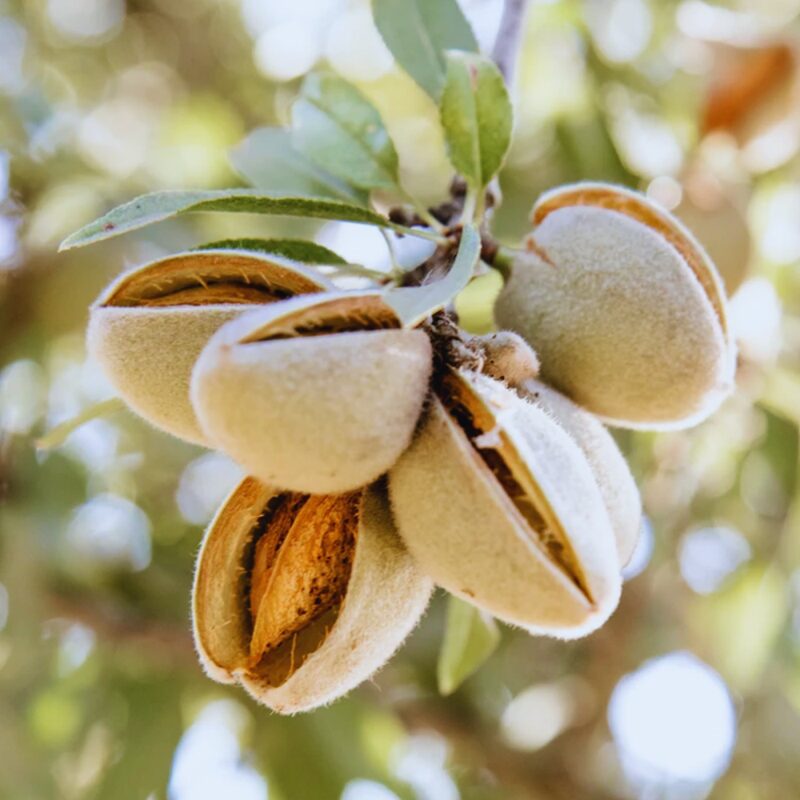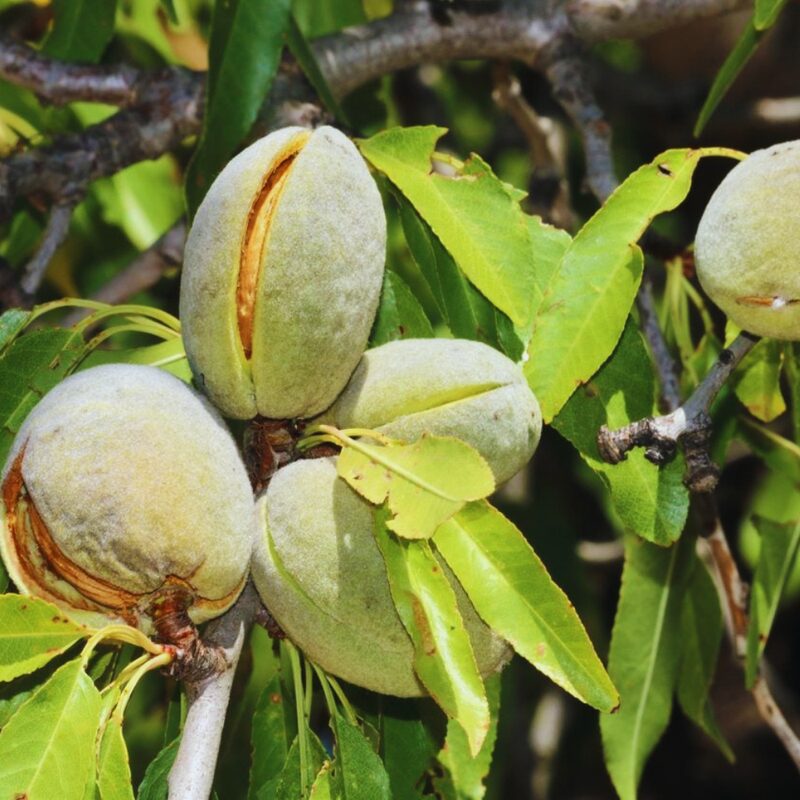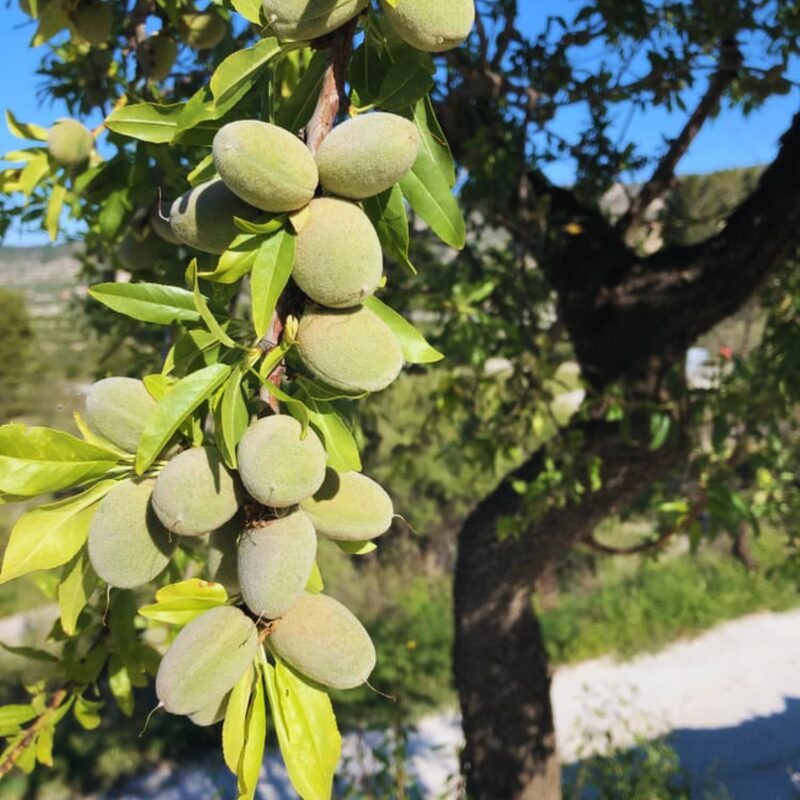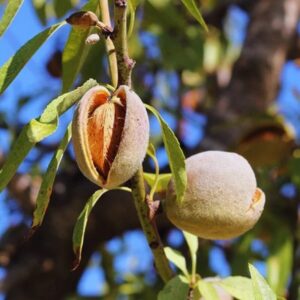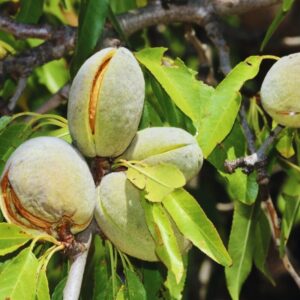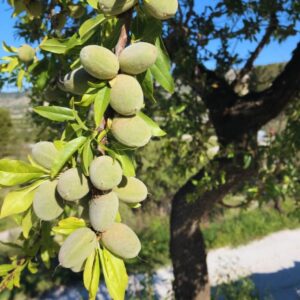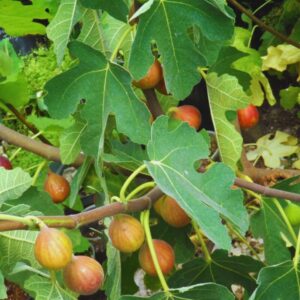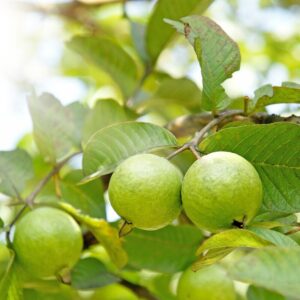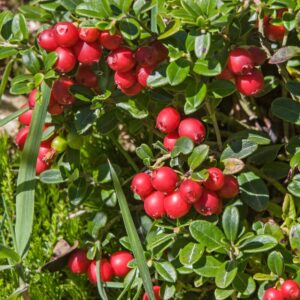Almond Tree Plant
Almond Tree Plant
Discover the beauty of the Almond Tree Plant. Standing 2 feet tall with fragrant pink or white flowers, perfect for gardens.
$52.99

With our Alive & Thrive Guarantee, we’ve got your back for the first 30 days! If you have any concerns about your plants, just reach out to us. Our team is here to help answer your questions and guide you in selecting the best plants for your garden, climate, and unique preferences. We're excited to help you create the garden of your dreams!
About the Almond Tree Plant
The Almond Tree Plant is a stunning addition to any garden, celebrated for being the earliest-flowering stone fruit. In early spring, it blooms with beautiful pink or white flowers that fill the air with a delightful fragrance. Growing to a height of 10 to 15 feet, it serves not just as a fruit-bearing tree but also as an ornamental marvel.
Benefits of Growing Almond Trees
Beyond their aesthetic appeal, almond trees offer a variety of benefits. They produce delicious nuts that are rich in nutrients, making them a great choice for health-conscious gardeners. Additionally, their blossoms attract pollinators, enhancing the biodiversity of your garden. With proper care, these trees can thrive and provide ample harvests for years to come.
Planting and Care Instructions
When planting your Almond Tree Plant, ensure it is placed in well-draining soil and receives full sunlight for optimal growth. Water regularly, especially during dry spells, to promote healthy development. Fertilizing in early spring can enhance flowering and nut production.
Frequently Asked Questions
- What is the best USDA zone for almond trees? They thrive in USDA zones 5-9.
- What type of soil is best for almond trees? Almond trees prefer sandy loam or well-drained soil.
- How much sunlight do almond trees need? They require full sunlight, at least 6 hours a day.
- When is the ideal planting period for almond trees? The best time to plant is in early spring or fall.
- How tall does the almond tree grow? It can reach heights of 10 to 15 feet.
Related products
-
USDA Hardiness Zone
5-9 -
Soil type
Sandy loam or well-drained soil -
Sunlight Exposure
Full sunlight, at least 6 hours a day -
Expected Planting Period
Early spring or fall -
No Shipping To
CA
Best Types of Ivy Plant for Houses: How to Choose the Perfect Ones for Your Home
Are you a garden lover looking to introduce some greenery into your home? Maybe you’ve
Nov
When to Harvest Garlic (Especially Fall-Planted Garlic)
TIMING IS EVERYTHING, they say – and for garlic, that truth hits with surprising accuracy.
Nov
11 of the Best Sweet Potato Varieties to Grow for Your Garden
If you’ve ever tried growing sweet potatoes, you know that picking the right variety can
Nov
The Comprehensive Guide to Growing Bay Leaf Plants for a Flavorful Garden
Imagine stepping into your garden, greeted by the earthy aroma of fresh bay leaves, their
Nov
Pruning Bougainvillea for Winter
Bougainvillea vines are known for their dazzling display of magenta, orange, and fuchsia bracts that
Nov
The Comprehensive Guide to Growing Clerodendrum Wallichii for a Stunning Garden
Imagine walking into a garden where delicate white flowers hang from graceful branches, their petals
Nov
8 Mistakes to Avoid When Planting Garlic That 90% of Gardeners Make
Planting garlic can be a rewarding experience, but many gardeners, especially beginners, end up making
Oct
Garlic Varieties: Everything You Need to Know Before Choosing the Right Type to Grow
If you’ve ever tried growing garlic, you know that choosing the right variety can make
Oct
-
USDA Hardiness Zone
5-9 -
Soil type
Sandy loam or well-drained soil -
Sunlight Exposure
Full sunlight, at least 6 hours a day -
Expected Planting Period
Early spring or fall -
No Shipping To
CA
About the Almond Tree Plant
The Almond Tree Plant is a stunning addition to any garden, celebrated for being the earliest-flowering stone fruit. In early spring, it blooms with beautiful pink or white flowers that fill the air with a delightful fragrance. Growing to a height of 10 to 15 feet, it serves not just as a fruit-bearing tree but also as an ornamental marvel.
Benefits of Growing Almond Trees
Beyond their aesthetic appeal, almond trees offer a variety of benefits. They produce delicious nuts that are rich in nutrients, making them a great choice for health-conscious gardeners. Additionally, their blossoms attract pollinators, enhancing the biodiversity of your garden. With proper care, these trees can thrive and provide ample harvests for years to come.
Planting and Care Instructions
When planting your Almond Tree Plant, ensure it is placed in well-draining soil and receives full sunlight for optimal growth. Water regularly, especially during dry spells, to promote healthy development. Fertilizing in early spring can enhance flowering and nut production.
Frequently Asked Questions
- What is the best USDA zone for almond trees? They thrive in USDA zones 5-9.
- What type of soil is best for almond trees? Almond trees prefer sandy loam or well-drained soil.
- How much sunlight do almond trees need? They require full sunlight, at least 6 hours a day.
- When is the ideal planting period for almond trees? The best time to plant is in early spring or fall.
- How tall does the almond tree grow? It can reach heights of 10 to 15 feet.
Related products
PLANTING & CARE
Best Types of Ivy Plant for Houses: How to Choose the Perfect Ones for Your Home
Are you a garden lover looking to introduce some greenery into your home? Maybe you’ve
Nov
When to Harvest Garlic (Especially Fall-Planted Garlic)
TIMING IS EVERYTHING, they say – and for garlic, that truth hits with surprising accuracy.
Nov
11 of the Best Sweet Potato Varieties to Grow for Your Garden
If you’ve ever tried growing sweet potatoes, you know that picking the right variety can
Nov
The Comprehensive Guide to Growing Bay Leaf Plants for a Flavorful Garden
Imagine stepping into your garden, greeted by the earthy aroma of fresh bay leaves, their
Nov
Pruning Bougainvillea for Winter
Bougainvillea vines are known for their dazzling display of magenta, orange, and fuchsia bracts that
Nov
The Comprehensive Guide to Growing Clerodendrum Wallichii for a Stunning Garden
Imagine walking into a garden where delicate white flowers hang from graceful branches, their petals
Nov
8 Mistakes to Avoid When Planting Garlic That 90% of Gardeners Make
Planting garlic can be a rewarding experience, but many gardeners, especially beginners, end up making
Oct
Garlic Varieties: Everything You Need to Know Before Choosing the Right Type to Grow
If you’ve ever tried growing garlic, you know that choosing the right variety can make
Oct

